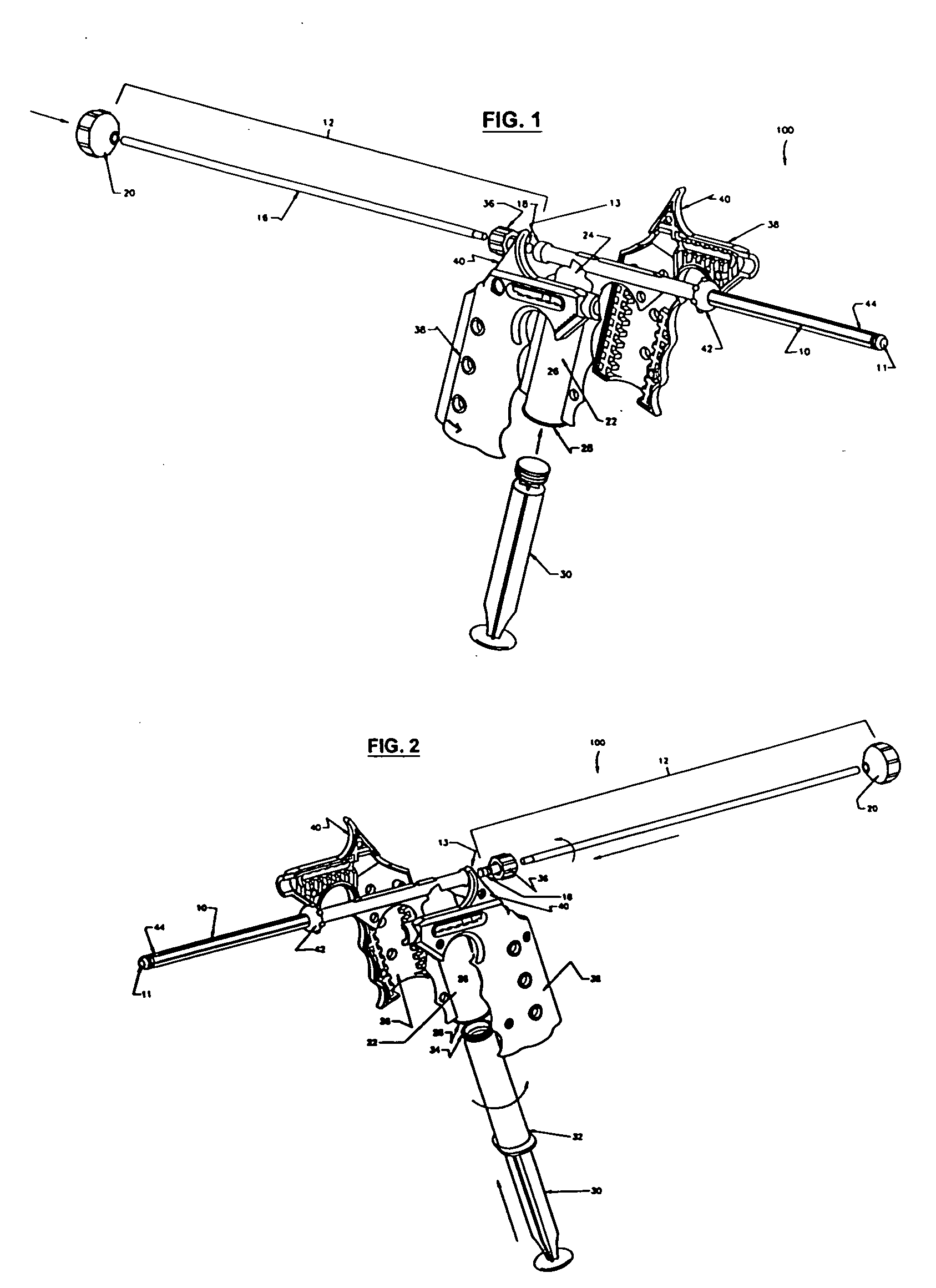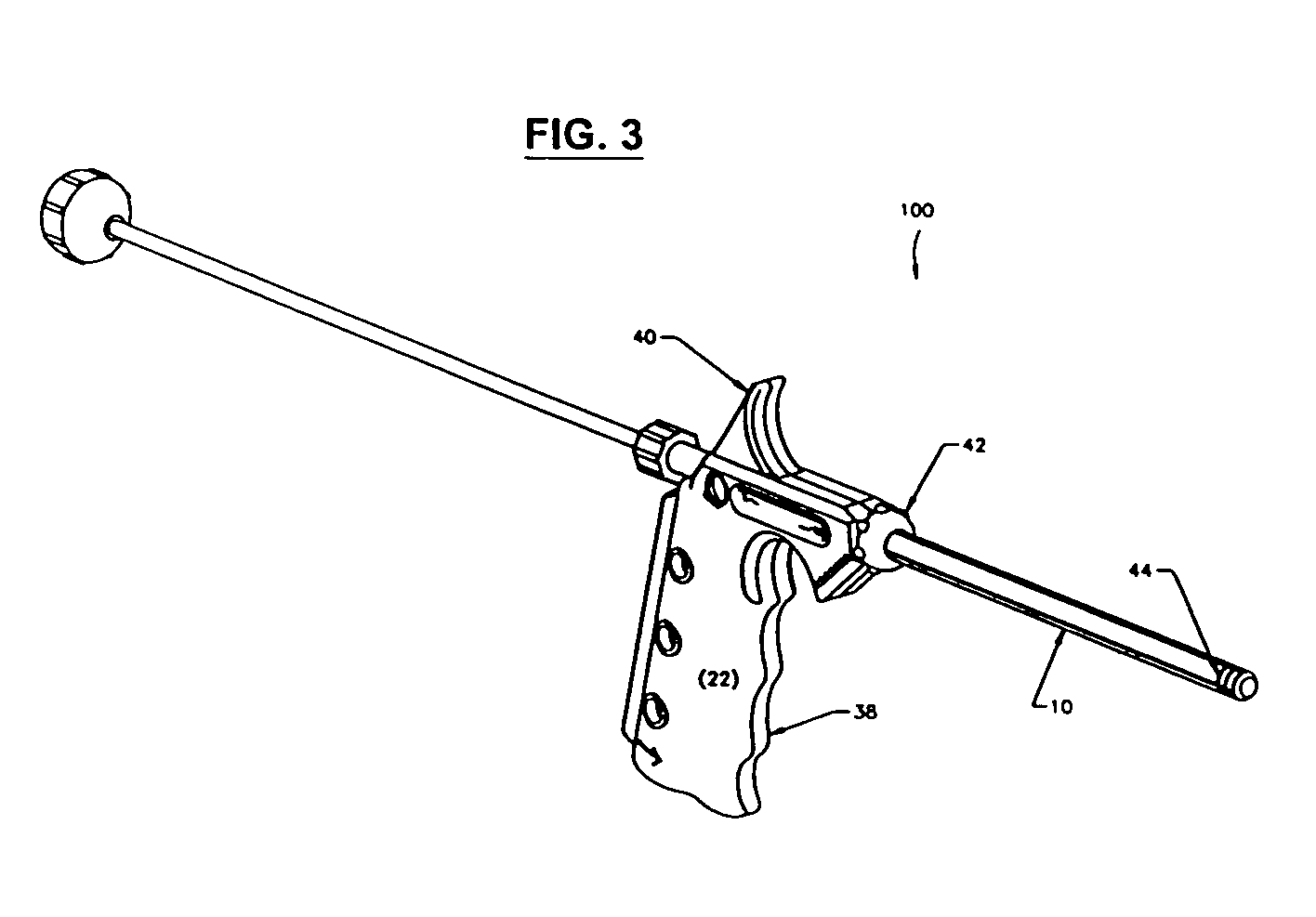Minimally invasive high viscosity material delivery system
a high-viscosity material and delivery system technology, applied in the field of delivery devices, can solve the problems of difficult to deliver to the surgical site using conventional delivery devices such as syringes, high-viscosity materials are difficult to force out of a conventional syringe fitted with a needle, and conventional syringes when used alone (i.e., without needles) are usually too large or too short for insertion into small surgical incisions, and achiev
- Summary
- Abstract
- Description
- Claims
- Application Information
AI Technical Summary
Benefits of technology
Problems solved by technology
Method used
Image
Examples
Embodiment Construction
[0011]FIGS. 1-2 show a minimally invasive delivery system 100 for placement of a high viscosity material in the human body. The Figures show a system comprising a cannula 10 that dispenses a high viscosity material 14 (not shown) from an open delivery end or orifice 11 to the selected treatment site in the human body. The end of the cannula 10 opposite the delivery end 11 is associated with a dispenser 12. The dispenser 12 is placed so that it pressures the high viscosity material through and out of the cannula 10. The high viscosity material 14 may be a gel, putty, paste, flowable composition containing particulates, high viscosity liquid (e.g., more viscous than water or the like), a combination thereof, or the like. The cannula 10 may be constructed of a suitable material such as metal, metallic alloys, plastics, glass or the like capable of providing the strength needed to safely introduce the high viscosity material into the treatment site. We have found that stainless steel, p...
PUM
 Login to View More
Login to View More Abstract
Description
Claims
Application Information
 Login to View More
Login to View More - R&D
- Intellectual Property
- Life Sciences
- Materials
- Tech Scout
- Unparalleled Data Quality
- Higher Quality Content
- 60% Fewer Hallucinations
Browse by: Latest US Patents, China's latest patents, Technical Efficacy Thesaurus, Application Domain, Technology Topic, Popular Technical Reports.
© 2025 PatSnap. All rights reserved.Legal|Privacy policy|Modern Slavery Act Transparency Statement|Sitemap|About US| Contact US: help@patsnap.com



